Adirondack Wildlife
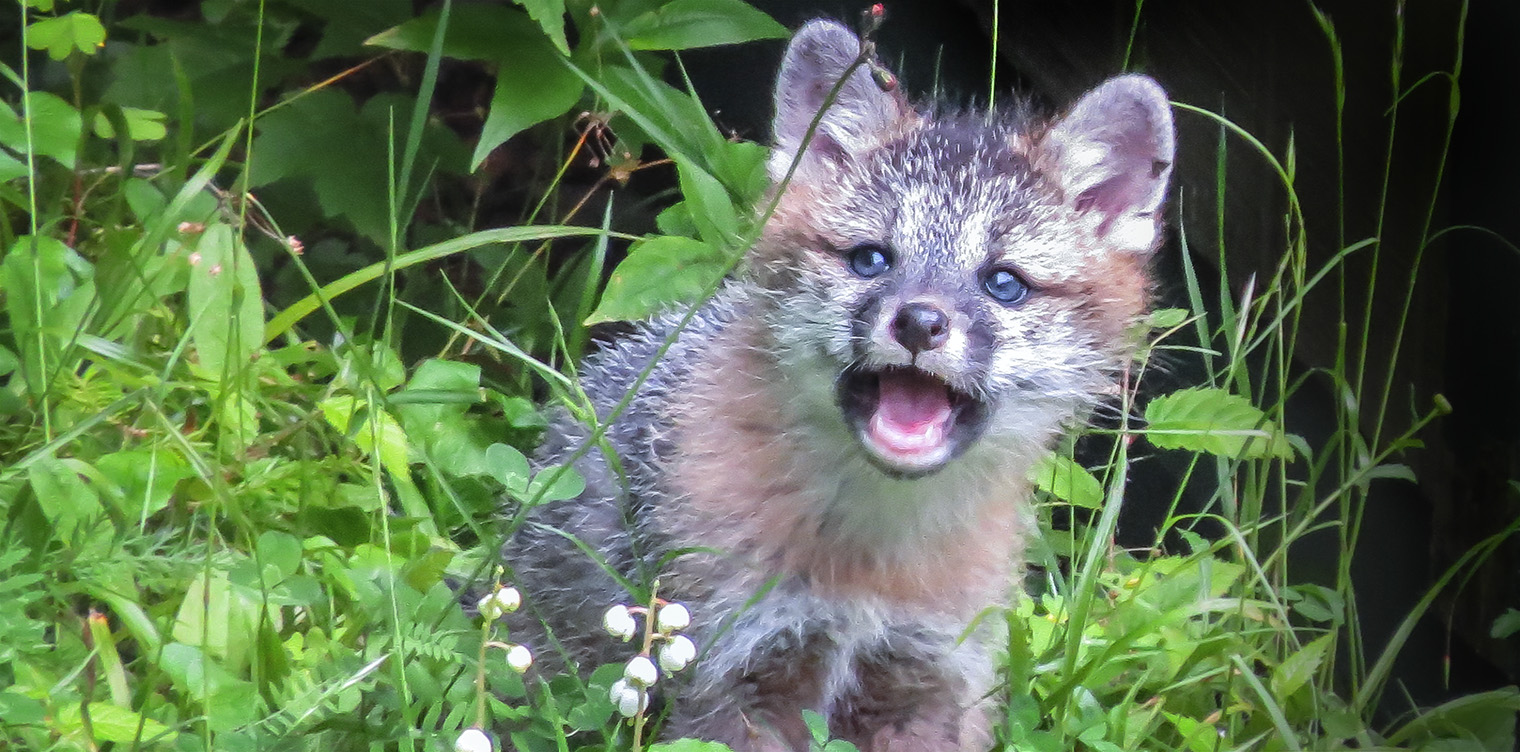
The varied habitats of the Adirondack Mountains are home to a wide variety of wildlife, including over 200 species of birds, 53 species of mammals, 35 species of reptiles and amphibians, and 74 species of butterflies. This diversity stems from the variety of forest and wetland communities in the Adirondack Park. This rich mosaic of habitats hosts a wide diversity of wildlife, making the Adirondacks a magnet for wild-life watchers.
Birds of the Adirondacks
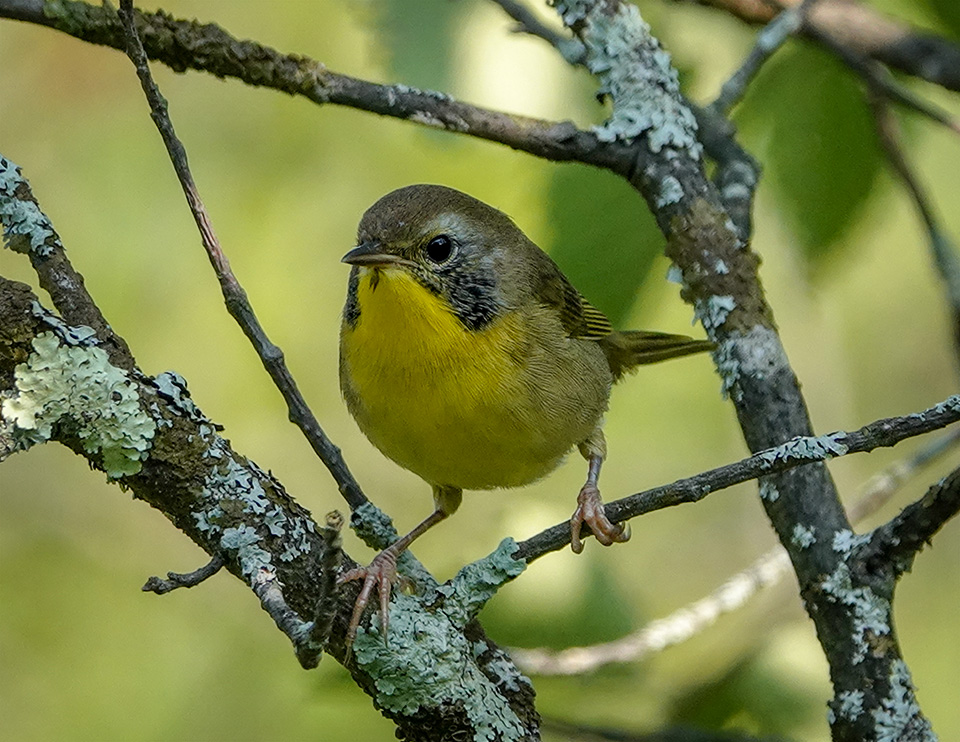
The vast majority of the over 200 bird species that live in or migrate through the Adirondacks are summer residents, arriving in great waves of migration in April and May. Here they find partners, filling the forest with song, then mate, build nests, and raise their young. Late April, May, and June are the peak months, with the earliest migrants showing up in April. These summer residents include raptors, ducks, the Common Loon (the Adirondacks’ iconic bird), as well as songbirds, such as the colorful and active warblers.
- During the breeding season, probably the best way to locate and identify birds is by their songs.
- After the offspring have fledged, the woods become quieter, with fewer songs and more chip notes and begging calls from the young birds. The birds tend to group together in mixed species flocks, usually with a core of chattering Black-capped Chickadees.
- As fall and cooler temperatures arrive, the majority of songbirds begin to make their way south. Among the earliest to depart are the warblers, who are heavily dependent on insects and invertebrates for food. Prior to departure, the migrants must ingest large quantities of food to fuel their flight.
- Even as the region’s summer residents depart, the Adirondack forests are still filled with birds – mostly migrants from Canada passing through the area. Many migratory species travel at night, landing at dawn to begin feeding for the next night’s travel. These short-term guests often form groups with resident Black-capped Chickadees, who know the best food sources.
As winter approaches, only a hardy set of locals remains, dominated by the ubiquitous Black-capped Chickadees, Blue Jays, and Red-breasted Nuthatches. This shorter list of birds that remain over the harsh winter includes, amazingly, the tiny Golden-crowned Kinglet.
Adirondack Mammals
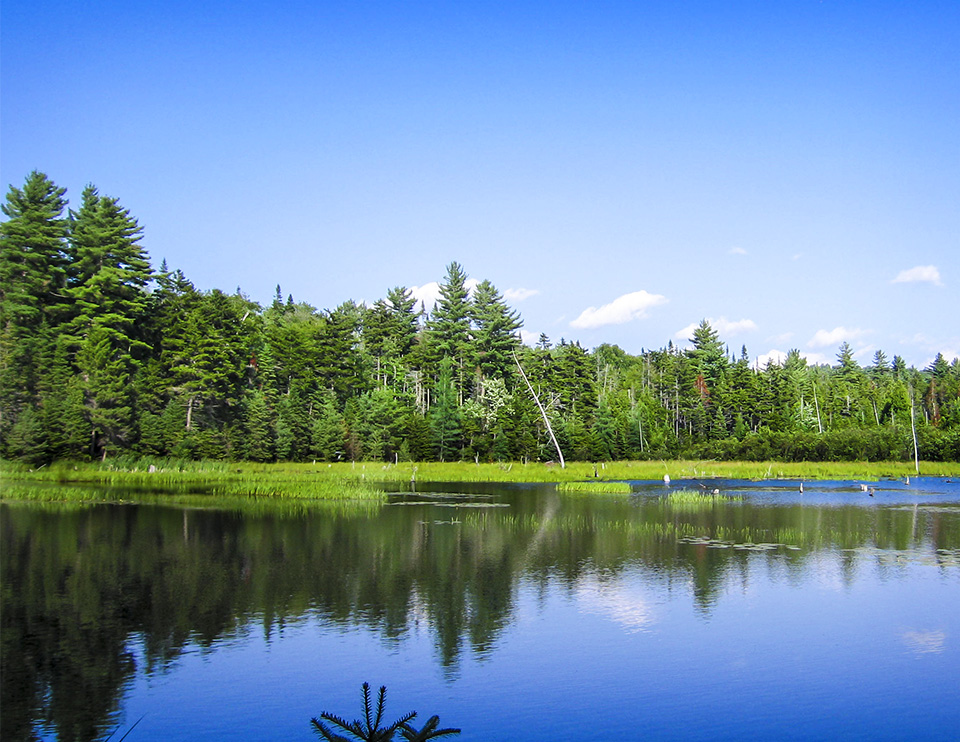
The 53 mammalian species that live in the Adirondacks represents a mix of those at home in temperate climatic zones and those which flourish in boreal zones. Some boreal species, such as moose, are at the southern limit of their range; other species more commonly found further south – like the Virginia Opossum (New York State’s only marsupial) – are at the northern limit of their range. Others, such as the American Black Bear, are found throughout the Eastern US.
Landscape Architects: Mammals not only respond to changes in habitat, they are themselves an important source of change in the Adirondack landscape. The American Beaver – the Adirondack’s largest rodent – is a prime example. These animals physically alter habitats by cutting down trees and building dams, creating large pond-like areas and wetlands that enable wetland-dwelling plants and animals to move in and significantly changing downstream ecosystems. If the dam is abandoned by the beavers or destroyed by humans, the pond drains; and a meadow forms in the large open space left behind, creating another new habitat.
Impact of Climate Change: The Adirondack Park’s list of resident mammals is gradually changing, as neighboring species respond to environmental changes, including climate change. Some species, like the Canada Lynx and Eastern Cougar, were once present within what is now the Adirondack Park, but are now considered extirpated, with no permanent breeding population.
Other species, like the Eastern Coyote, are relatively new arrivals to the Adirondacks; one theory is that they originally inhabited central North America and extended their range eastward in response to human changes to the landscape. In the process, they apparently interbred with wolves, to produce a larger, more wolf-life mammal now common throughout the Adirondacks.
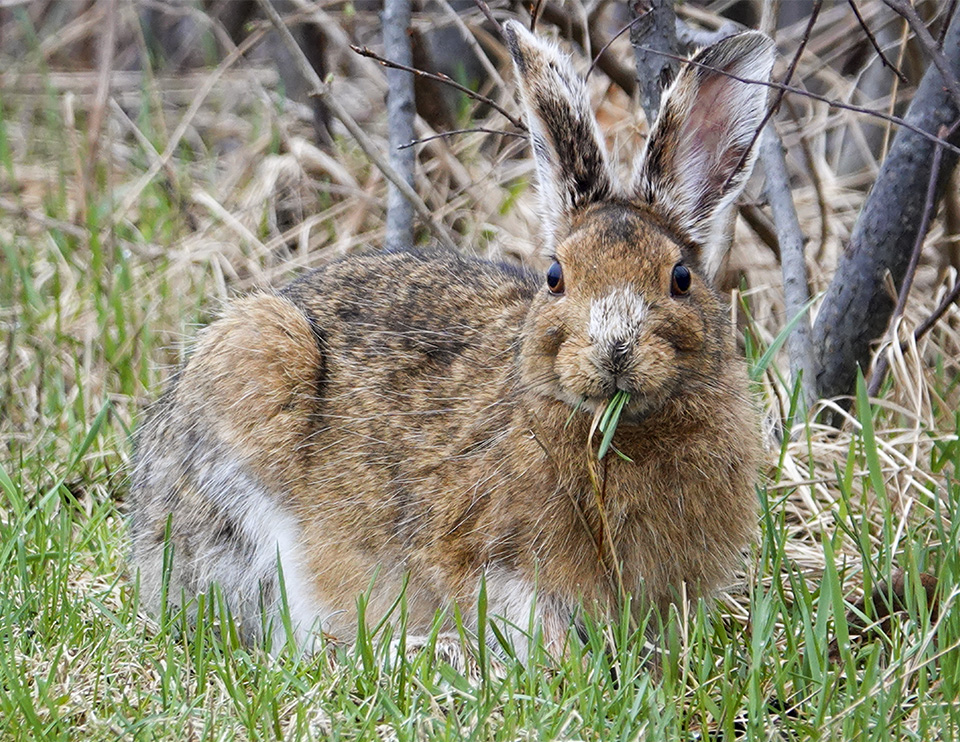
The distribution of the red and gray fox has also been affected by changes in climate and the rise in the coyote population. The Red Fox is still the most common of the two species within the Adirondacks, but its numbers appear to have been negatively affected by the increased numbers of coyotes. The tree-climbing Gray Fox, meanwhile, appears better adapted to an expanding coyote population and the maturing of the Adirondack forest. As a result, the Gray Fox is expanding its range northward and is now just as likely to be seen as the Red Fox in many parts of the Adirondack Park.
Snowshoe Hare populations have also been affected by climate change. Populations in New York State (including the Adirondack region) are declining, apparently due to changes in the timing and duration of snow pack, which may impede the hare's effectiveness at evading predation. Declining Snowshoe Hare populations, in turn, have direct implications for the animals that prey on them, such as Fishers.
Butterflies and Moths of the Adirondacks
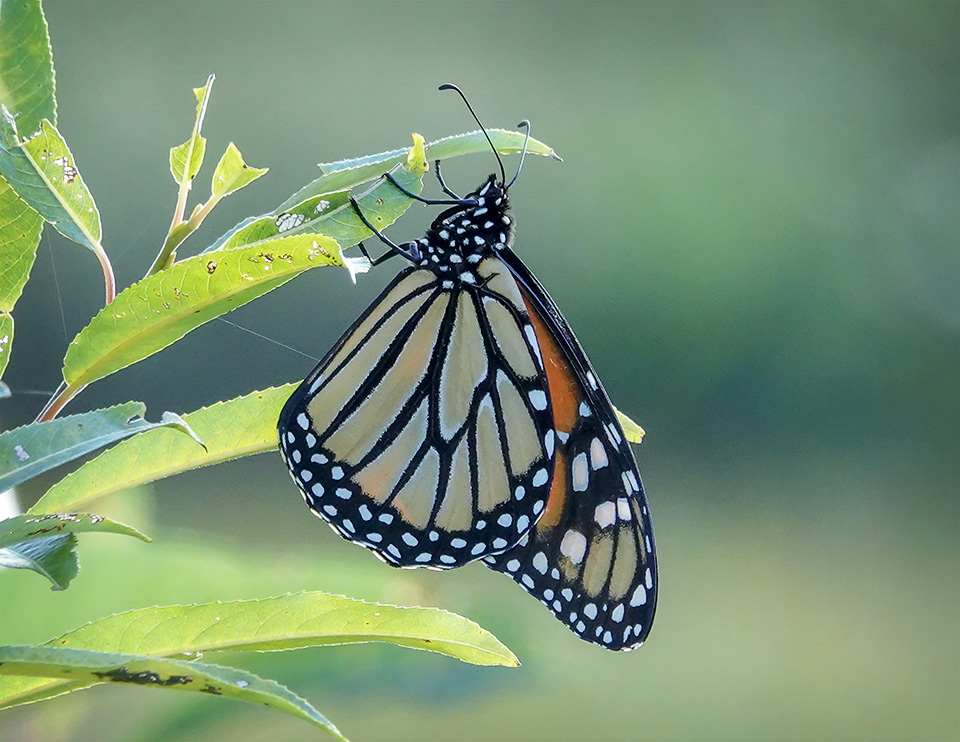
Although the Adirondack Mountains are home to many species of invertebrates, butterflies and moths provoke the most interest among citizen scientists. Butterflies are active during the day and have thin antennae with a club-shaped tip. Moths are active primarily at night and have feathery antennae.
Seventy-four of the 700 species of butterflies that occur in North America can be found within the Adirondack Park, including the Eastern and Canadian Tiger Swallowtail, American Lady, and a host of fritillaries. Resident moths include the pale lime green Luna Moth, the prominently-patterned Cecropia Silkmoth, and the hummingbird-like Hummingbird Clearwing.
Butterfly populations in the Adirondacks are not static, since these species (like every other species) are impacted by larger changes in ecosystems. For instance, the most famous of the Adirondacks’ migratory butterflies – the Monarch – has been negatively affected by loss of habitat both in its southern breeding grounds where it overwinters and in the areas where it dwells during its northward journey. Winter storms at overwintering sites have also taken a toll. As a result, the number of Monarchs seen in the Adirondack Mountain, as in other parts of North America, has dropped precipitously.
Adirondack Amphibians and Reptiles
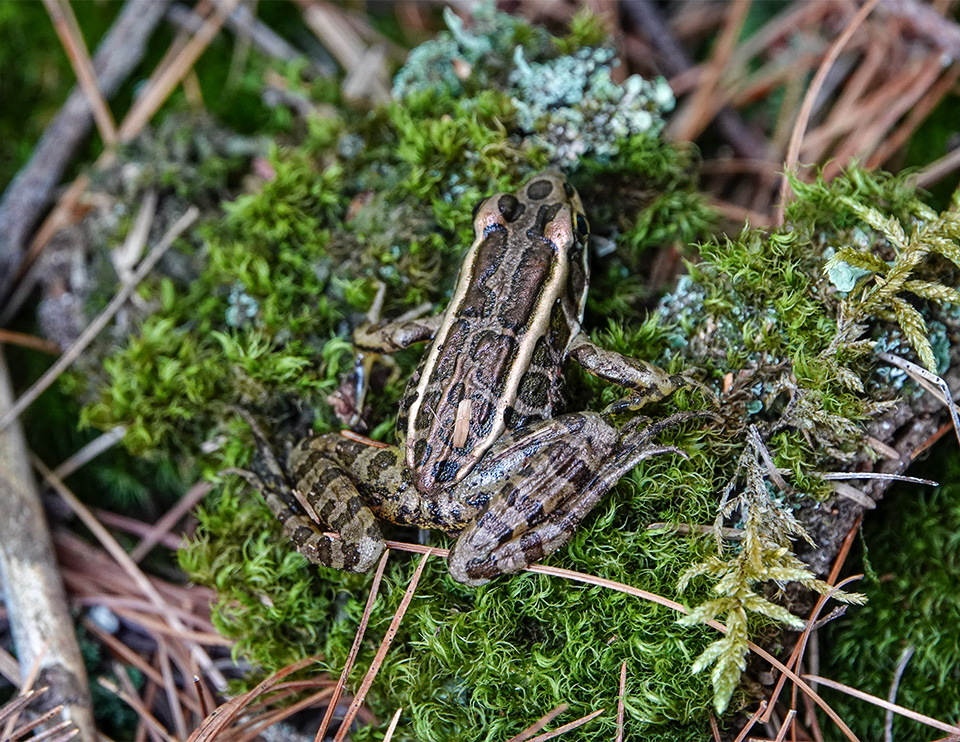
Seven amphibian families and five families of reptiles, totaling 37 species, occur in the Adirondack region. Adirondack amphibians include four families of salamanders. One of the most interesting of the salamanders is the Eastern Newt, which has both an aquatic stage and a terrestrial stage. During its terrestrial stage, when it is known as the Red Eft, it sports right orange skin with two rows of black-rimmed spots on the back. After several years, it transforms into a yellow to olive-brown aquatic adult, with a series of orange spots on its back.
Over 85% of amphibian species are frogs or toads. Perhaps the most intriguing are those whose calls compete with bird songs and calls in wetland areas, such as Spring Peepers (whose loud, recurring cheeping sounds dominate marsh areas in the spring), Green Frogs (whose call sounds like a plucked banjo string), Pickerel Frogs (which emit a soft, grating snore), and Mink Frogs (whose deep, soft croaks have been likened to the sound of distant hammering or horses hooves on cobblestone).
The Adirondacks also hosts a number of turtles, including the Snapping Turtle, the Painted Turtle, and Wood Turtle. Snakes that make their home in the Adirondacks include the Common Garter Snake, the Smooth Green Snake, and the Red-bellied Snake. The Adirondack Park has only one venomous snake – the Timber Rattlesnake (Crotalus horridus), which is found only in a few isolated rocky areas near Lake George.
References
James M. Ryan. Adirondack Wildlife: A Field Guide (University of New Hampshire Press, 2008).
D. Andrew Saunders. Adirondack Mammals (State University of New York, College of Environmental Science and Forestry, 1988).
William K. Chapman. Mammals of the Adirondacks. A Field Guide (North Country Books, 1991)
Peter J. Marchand. Nature Guide to the Northern Forest. Exploring the Ecology of the Forests of New York, New Hampshire, Vermont, and Maine (Appalachian Mountain Club, 2010).
Roland W. Kays and Robert A Daniels, "Fish and Wildlife Communities of the Adirondacks," William F. Porter, Jon D. Erickson and Ross S. Whaley. The Great Experiment in Conservation. Voices from the Adirondack Park (Syracuse University Press, 2009), pp. 71-86.
New York State Department of Environmental Conservation. Animals, Plants, Aquatic Life. Retrieved 19 September 2015.
New York State Department of Environmental Conservation. Mammals. Retrieved 19 September 2015.
Adirondack Ecological Center. Adirondack Flora and Fauna. Retrieved 15 November 2022.
Adirondack Ecological Center. Adirondack Mammals. Retrieved 15 November 2022.
Adirondack Ecological Center. Adirondack Amphibians and Reptiles. Retrieved 15 November 2022.
Adirondack Ecological Center. Adirondack Butterflies. Retrieved 15 November 2022.
Bring Back the Monarchs. Retrieved 19 September 2015.
Tom Kalinowski, "Birding: The Great Warbler Migration," Adirondack Almanack, 10 September 2012. Retrieved 19 September 2015.
Adirondack Center for Loon Conservation. Retrieved 6 December 2019.
Eastern Coyote/Coywolf Research. Retrieved 6 December 2019.
Butterflies and Moths of North America. Species Profiles. Retrieved 15 November 2022.
State University of New York. College of Environmental Science and Forestry. Frogs and Toads of New York. Retrieved 3 March 2020.
U.S. Department of the Interior, U.S. Fish and Wildlife Service, and U.S. Department of Commerce,
U.S. Census Bureau. 2016 National Survey of Fishing, Hunting, and Wildlife-Associated Recreation. Retrieved 15 November 2022.
